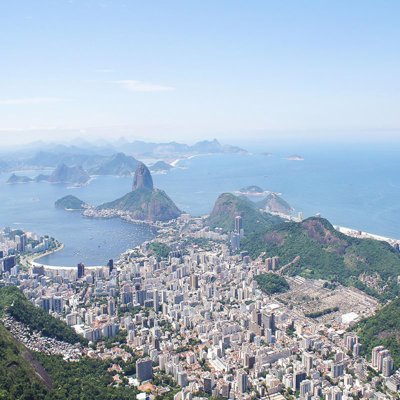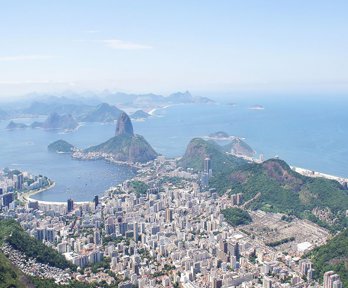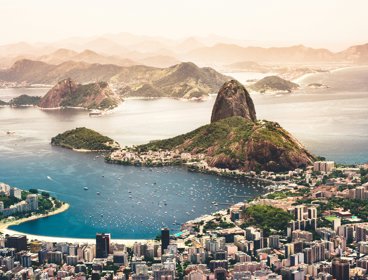The aim of this unit is to introduce pupils to the diverse and unique culture of Brazil. Throughout the unit pupils will be encouraged to compare the geography of Brazil to that of the UK (an integral element of the new primary curriculum). Pupils will begin by studying the human and physical features of Brazil before placing Brazil in the wider context of the world and South America. They will investigate the many differences between urban and rural Brazil and case study the lives of people living within Rio de Janeiro.
Where is Brazil? An identification of the human and physical features
This lesson introduces pupils to the importance of locational and place knowledge. It aims to further develop pupils’ geographical investigation and questioning skills. Pupils will investigate Brazil through a series of images and soundscapes from which they will be encouraged to share their current knowledge and understanding of Brazil. Following this, during the main activity the pupils will take part in a market place task to further develop their knowledge of the human, physical, locational and geographical regions of Brazil.
The Brazilian climate
The aim of this lesson is to build upon the pupils’ knowledge and understanding of climate in Brazil. They will begin the lesson by watching a clip from the BBC in which England football coach Roy Hodgson discusses not wanting his team to play in Manaus during the 2014 world cup. They will then discuss and answer the question: Why did the England football team not want to play in Manaus?
In the main part of the lesson pupils will take on the role of geographical investigators. Working in pairs they will use ICT to study climate data from a variety of locations in Brazil (Manaus, Salvador, Brasilia, Rio, and Curitiba). Pupils will then create their own climate graphs which they will compare in the plenary of the lesson to the climate in the UK.
Urbanisation: the great tug of war (push/pull)
Within this lesson pupils will investigate the main reasons why so many Brazilians have moved from the north of the country to the south. They will begin the lesson on their feet. One side of the classroom will represent the urban south (Brasilia) and the other, rural north (The Caatinga). Pupils will begin at the rural end of the classroom and asked to read a series of statements (push/pull factors) and make a decision whether this would make them want to stay in the north or move towards the south. As a result of the warm-up activity the pupils will then be asked to explain their thoughts and findings to the class before forming a definition of a push and pull factor. In the main part of the lesson the pupils will imagine that they are living in The Caatinga. They will plan and write a letter to a friend explaining why they want to leave the countryside (push) and move to Brasilia (pull). The less able pupils will be provided with a writing frame (or use of ICT if available) to support their learning. The pupils will end the lesson by comparing push/pull factors within Brazil to those within the UK.
A city of two halves
Within this lesson, pupils will investigate the similarities and differences between the lives of young people living in different parts of Rio de Janeiro. They will discuss and investigate the question of why sixteen million Brazilians live below the poverty line, before using video links and information pages to create a Venn diagram comparing the lives of young people living in Barra di Tijuca and Rochinha. For the main activity, pupils will create either a birthday list or write a letter in role as a young person living in Rio de Janeiro. The lesson concludes with pupils comparing the lives of young people in Brazil to their own lives.
The indigenous people of the Amazon rainforest
This lesson explores the lives of the indigenous people of the Amazon rainforest and aims to develop the pupils’ knowledge and understanding of tribes in an exploratory and investigative approach. The pupils will begin the lesson by watching video footage of uncontacted tribes. They will be given the opportunity to discuss what they believe the lives of these tribes to be like, before creating an information page about the Awa tribe. Within the lesson, pupils will discuss the many threats which are facing the Awa tribe (logging, farming, cattle ranching, and disease).
What is life like in Brazil?
In the final lesson of the unit, pupils will be given the opportunity to present their knowledge and understanding of Brazil. Using a series of images and video clips, the pupils will begin to investigate the huge cultural, physical, and human diversity in Brazil. They will be encouraged to work independently to form their own questions and knowledge about the country. This will encourage the development of geographical enquiry, asking questions of evidence and examining what it might tell us about Brazil.
In the main part of the lesson pupils will be split into groups where they will create one of the following: a city escape guide, ecotourism brochure, beach resort brochure, rainforest exploration guide. The lesson and unit will conclude with a presentation of the pupils' work. The pupils will try to sell their information guide to the rest of the class and teachers using their presentation skills.
About the author
Having always taken a keen interest in geography, Claire Sykes completed a BSc in Geography at the University of Manchester in 2007. She focused on the importance of outdoor learning and geography as part of her dissertation, and worked as an educational officer for a textile recycling company before starting her career as a primary school teacher in 2009. Ever since, Claire has taught at Eversley Primary in the London borough of Enfield, where she has taken on a leading role in the subject of geography and sustainability.




